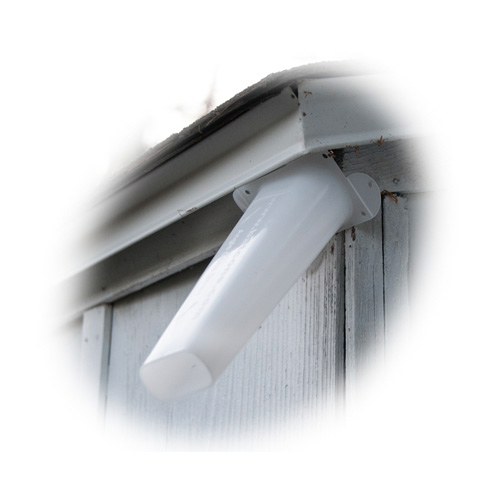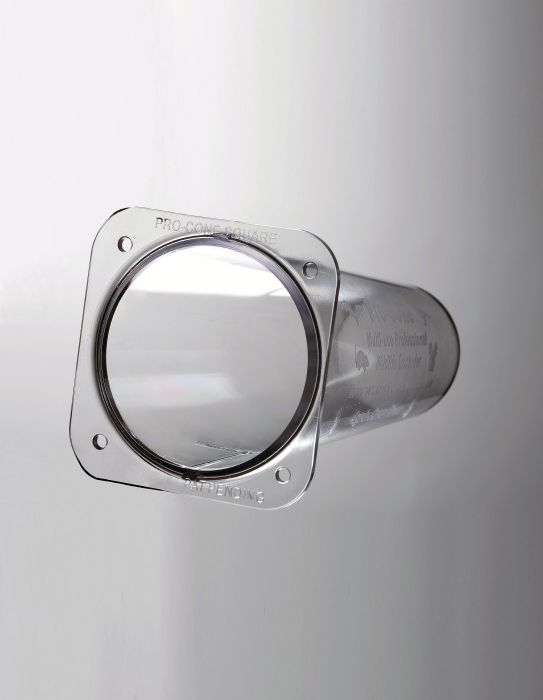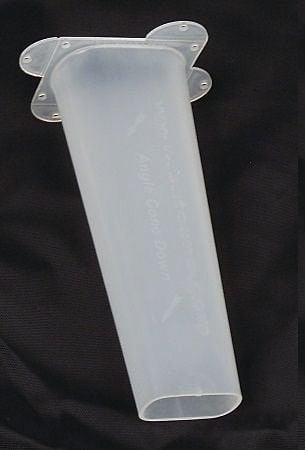
In this FAQ post, we review bat exclusion, bat exclusion devices and how bat law here in the UK has an effect on bat exclusion work.
Please note, only licensed, ethical and humane methods of bat exclusion (known as humane roost exclusion or HRE) are covered in this FAQ. We do not consider any other method to be appropriate, nor do we supply bat exclusion devices for this work to those without the relevant license.
Bats often roost in roof spaces, attics, crevices in walls etc. Sometimes work that will affect the bats needs to be carried out in these places. The Bat Conservation Trust provides a resource for home and building owners that might be useful in this situation.
If bats are not wanted in a location (by the property owner, for example), a bat exclusion device may be used. This should only happen after a licence has been applied for successfully. The device will allow the bats to leave the location but not get back in. They’ve been excluded from their resting or sheltering place. After this, and depending on the stipulation in the license:
• Activities such as building work (for example) can be completed then the bats allowed entry again
• the exit/entrance might be permanently blocked up to prevent future access
Why exclude bats?
Bats might be excluded for a number of reasons. For example, renovations of old structures such as barns.
In sufficient numbers bats can be noisy and messy - not something you’d necessarily want in a house. In 2011, permission was given for a homeowner in the North of England to have approximately 300 bats excluded from his house, due to the noise. Importantly, the license was timed to allow for the bats to finish using the property as their summer roost.
Sometimes though, bats choose a spot that’s inadvisable for their own safety. In the winter of 2016/2017, three brown long-eared bats chose to roost in a fire training rig at Cornwall airport, Newquay. Fortunately, they were discovered and a license obtained for their exclusion, so no bats were harmed when the rig was next used.
What is the effect of exclusion on bats?
The conflict between bat and human needs is not going to end any time soon so it’s important we understand the effects.
A 2015 report investigated the UK impact of bat exclusion on survival and reproduction. In the spring (when females are in the early stage of pregnancy), soprano pipistrelles, which use multiple roosts, were excluded under license from five roosts within houses. The bats all moved to nearby known roosts and no change in roosting behaviour was detected, nor was there a change in foraging behaviour.
The report stated that “While the number of soprano pipistrelle exclusions currently licensed each year is likely to have little effect on local populations, the cumulative impacts of licensing the destruction of large numbers of roosts may be of concern.”
Soprano pipistrelles use multiple roosts. However, a Canadian study monitored big brown bats (Eptesicus fuscus), which are loyal to one maternity site. The study found that “reproductive success reduced by more than half compared to control colonies when excluded from roosts prior to parturition (Bringham and Fenton, 1986).” Interestingly, their foraging behaviour did not change. The study sums up with a suggestion that “bats roost to take advantage of site-specific factors that may increase reproductive success.”
Bat Exclusion and the Law
When it comes to bat exclusion, the law is quite clear. It’s an offence.
According to Gov.uk, without a licence it’s illegal to be “obstructing access to their resting or sheltering places (on purpose or by not taking enough care)”.
Bats might be small creatures, but the penalties for preventing them from accessing their roosts are no small matter.
If found guilty of a bat-related offence, either (or both) of the following could happen:
• you could be sent to prison for up to 6 months
• you could get an unlimited fine
As we mentioned earlier, a mitigation licence is needed if work will have an impact on bats that would otherwise be illegal. The UK government resource can be found here.
What are bat exclusion devices?
Providing, of course, a license has been obtained for the exclusion, bat exclusion devices can be placed in the access points so that the bats leave but cannot return.
Each is a one way device consisting of three parts:
• a conical tube
• an integrated flange
• an optional flange (not included)
The cone is sized to allow all UK bats to exit.
The integrated flange allows for fixing the tube to a wall (for example) and the optional flange is a larger square of either vinyl or wire mesh. This covers a greater (and more variable) surface area and can be fixed in place with tape, screws or staple gun.
The cone is made of smooth, hard plastic. This makes it easy for the bat to leave as it as the tube is pointed downward and they crawl, slip and slide their way out.
Bats don’t tend to fly up into an access point. Instead, they prefer to land and crawl in. Since the cone offers no rough surface to grip, they can’t land successfully. It’s “no entry” for the bats.



How to install and use a bat exclusion device, or bat cone
After assessing all access points, ensure that any unused points that could provide access are blocked.
Where an entry or exit point is larger than one cone, use multiple cones beside each other. Also use multiple cones when dealing with large bat colonies.
Each cone should be installed in a downward angle.
Including installation, from 3 to 5 days to ensure all bats leave the structure. We recommend leaving the cone(s) in place for at least this length of time. If there is bad weather during this time some bats may stay inside, in which case this period should be extended.
Some tools you may need are:
- Staple gun and staples for affixing a flange in place
- Tin snips or cutters (useful for cutting the wire mesh flange or other screen mesh used to reduce the access area)
- Wire screen mesh
- Caulking gun & caulk
- Foam gun or foam backer rod or expanding foam
- Heavy duty leather gloves
- Tape (for mounting the cone to various surfaces – note: the tape may lift paint)
- Screws & washers (for mounting the cone or screen mesh)
- Ladders (please bear in mind the Working at Height regulations)
Do Bat Exclusions Work?
Yes, providing the bat exclusion device is fitted correctly and there are no other access points that the bats might use. The Bat Conservation Trust tells us that bats aren’t rodents and don’t chew through building materials, so they will only use existing holes.
Bat exclusion might fail if the bats discover access points you don’t know about or find a new access point, made by storm damage to a roof, for example.
Where to buy bat cones?
Right here in from our range of bat exclusion devices.
Please note, despite being low cost they are only for professional use and we will ask about your mitigation license.
When is the right time for bat exclusion?
When to carry out bat exclusion depends on the season, the bat species, their behaviour and any other circumstances that affect the situation.
If bats are hibernating because it is winter, they won’t be flying in and out, so an exclusion device wouldn’t work without somehow being worken up first. With no food (insects) to catch outside, it’s unlikely a license would be granted until the spring. Any earlier and the bats would starve.
If the bats are giving birth in their maternity roost, again it’s unlikely a license would be granted until their young have developed sufficiently (August).
While we’re on the subject of hibernation, the BCT has an interesting point about our most common bat, the pipistrelle:
“… we don’t know where they all go in winter! We have not found enough hibernation roosts to account for the numbers we see in the summer months.”
How much does a bat exclusion cost?
Unfortunately, we can’t answer this question because it depends on a number of factors. But to give you an idea of what’s involved, here are five different stages that may be used in this work:
- Initial consultation
- Full survey
- License application
- Bat exclusion
- Follow up survey
For advice (including costs), the Bat Conservation Trust recommend contacting your local “Statutory Nature Conservation Organisation (SNCO) or a professional licensed ecological consultant.
In summary
We’ve covered quite a few FAQs regarding bat exclusion and the devices used. If there’s something we’ve missed, or you have a question, do let us know.
Before we go, one last point, which is always worth repeating:
Bats are a schedule 1 protected species under the Wildlife & Countryside Act. It is illegal for any member of the public to disturb a roost, handle or kill any bat.
Citations
"I Need to Carry Out Work That May Affect Bats." Bat Conservation Trust, www.bats.org.uk/advice/living-with-bats/i-need-to-carry-out-work-that-may-affect-bats. Accessed 30 Apr. 2019.
"Harrogate Man Can Remove Hundreds of Bats from his Home." bbc.co.uk, BBC News, 29 June 2011, www.bbc.co.uk/news/uk-england-york-north-yorkshire-13960435. Accessed 30 Apr. 2019.
"Cornwall Airport, Newquay: Bat Exclusion." http://www.coveecologicalsurveys.co.uk, Cove Ecological Surveys, 11 Feb. 2018, www.coveecologicalsurveys.co.uk/index.php/news/102-cornwall-airport-bat-exclusion. Accessed 30 Apr. 2019.
Stone, Emma, et al. "Managing Conflict between Bats and Humans: The Response of Soprano Pipistrelles (Pipistrellus pygmaeus) to Exclusion from Roosts in Houses." PLOS ONE, PLOS, 5 Aug. 2015, journals.plos.org/plosone/article?id=10.1371/journal.pone.0131825. Accessed 30 Apr. 2019.
"Action: Exclude Bats from Roosts During Building Work." Conservation Evidence, Conservation Evidence, Department of Zoology, University of Cambridge, www.conservationevidence.com/actions/1930. Accessed 30 Apr. 2019.
Mackintosh, M. 2016. Bats and licensing: a report on the success of maternity roost compensation measures. Scottish Natural Heritage Commissioned Report No. 928. Accessed 30 Apr. 2019.
Brigham, Mark R., and Brock M. Fenton. "The influence of roost closure on the roosting and foraging behaviour of Eptesicus fuscus (Chiroptera: Vespertilionidae)." Canadian Journal of Zoology, Canadian Science Publishing, www.nrcresearchpress.com/doi/abs/10.1139/z86-169#.XMmcXehKiUk. Accessed 30 Apr. 2019.
"Bats: Apply for a Mitigation Licence (A13)." GOV.UK, Crown copyright, 6 Oct. 2014, www.gov.uk/government/publications/bats-apply-for-a-mitigation-licence. Accessed 30 Apr. 2019.
"Bats: Protection and Licences." GOV.UK, Crown Copyright, 8 Oct. 2014, www.gov.uk/guidance/bats-protection-surveys-and-licences. Accessed 30 Apr. 2019.
Bat Cone Instructions (pdf). BATCONE.
"How to Install Batcone." YouTube.com, uploaded by Bird Barrier America, YouTube, 3 Apr. 2012, youtu.be/oOf9cWhF7N4. Accessed 30 Apr. 2019.
"Living with Bats." Bats.org.uk, Bat Conservation Trust, www.bats.org.uk/advice/living-with-bats. Accessed 30 Apr. 2019.
"FAQ." Batcon.org, Bat Conservation International, www.batcon.org/why-bats/bats-are/bats-are-important/132-resources-issues/for-specific-issues/bats-in-buildings-cat. Accessed 6 May 2019.
"A Year in the Life of a Bat." bats.org.uk, Bat Conservation Trust, www.bats.org.uk/about-bats/a-year-in-the-life-of-a-bat. Accessed 6 May 2019.
"Bat Roosts." Bats.org.uk, Bat Conservation Trust, www.bats.org.uk/about-bats/where-do-bats-live/bat-roosts/hibernation-roosts. Accessed 6 May 2019.


